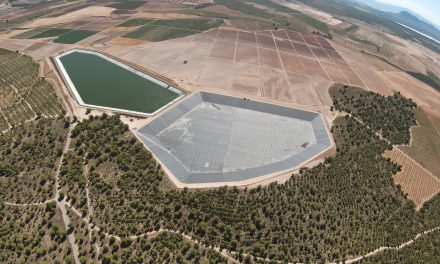
Improve water consumption in agriculture

In agricultural production, there is a combination of several factors that are fundamental for farmers to obtain the maximum potential from the areas destined for crops. For some years now, one of the topics of conversation that is undoubtedly present in discussions, conferences and meetings between farmers worldwide is how to improve water consumption in agriculture to reduce environmental impact and deal with the new challenges of water scarcity.
According to data from the webpage Seametrics, water consumption for agriculture in the United States accounts for around 80 percent of the country’s water use, while it reaches 90 percent in most states that are located in the western part of the nation. In this sense, agricultural irrigation turns out to be one of the largest consumers of freshwater, an example of which was perceived in 2005 when, after compiling data, it was known that irrigation accounted for 32 times more freshwater withdrawals in comparison with what is used in the domestic sphere (128 billion gallons per day against 4 billion gallons per day).
Today, access to water is somewhat limited and, if you will, expensive. Therefore, there is a need to implement more efficient irrigation policies in the agricultural area as a viable way to contribute to making water consumption in agriculture more and more responsible, thus guaranteeing the profitability of crops.
The information provided by the United States Department of Agriculture, indicates that relevant proposals have been developed for some years with the aim of improving water management on farms, which has helped reduce average water rates by acre in all crops and regions. Likewise, there are institutional measures that focus on the care of water basins and the need to preserve water wisely, especially in dry seasons where covering the agricultural demand is crucial.
In addition to the modernization of the technique of controlled irrigation, the use of plastic films is one of the alternatives par excellence that agricultural producers are taking advantage of to improve water consumption in agriculture. By using this tool, farmers have noticed significant improvements in the yield of their crops, while saving a large amount of water, supplies and money.
The influence of the use of plastics
Plastic films in agricultural production not only provide protection to the crops from diverse external factors such as sudden changes in climatic conditions, insects and diseases, but also help reach better harvests since they allow to modify temperature, humidity and light according to the needs of each stage of the growth cycle.
The use of plastics for agriculture is extensive and there are different types such as mulching plastics for example, which are basically used to save water and obtain early crops with better appearance. The effects of using this type of plastic, as well as storage tanks for water, are positive since they allow to maintain the moisture and nutrients of the soil, preserve its structure and make the most of fertilizers so that the crops yield more, are protected and a larger number of healthy products is obtained.
Not only do mulch plastics have a direct impact on the soil structure as well as the loss of irrigation water through evaporation. More technical irrigation systems, such as drip systems, are a huge step forward in the economy of water although the significant investments in fixed structures condition the quick return on investment. More basic advances with layflat irrigation hoses for low pressure irrigation have become a popular problem solver for larger surface irrigation in crops like cotton, sugar cane, soja or even tobacco. These flexible plastics adapt easily to any terrain, do not require permanent structures and have reduced consumption of water and energy in various trials done in the USA.
The use of agricultural plastics in general has spread significantly transforming the growing areas. They are also present in all processes that help improve water consumption in agriculture, thanks to its quality of concentrating moisture and all the nutrients of the soil.





![[eBook] Sustainability and water management](https://agriplasticscommunity.com/wp-content/uploads/8_550x310_ENG-440x264.png)
![[eBook Trends in Agriculture Plastics] Increasing use of biodegradable mulch](https://agriplasticscommunity.com/wp-content/uploads/550 × 310_2_ENG-440x264.png)
![[eBook Trends in Agriculture Plastics] Reducing the plastic used in the manufacture of agricultural films](https://agriplasticscommunity.com/wp-content/uploads/550 × 310_1_ENG-150x150.png)





















